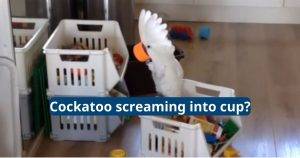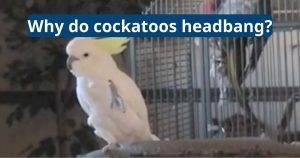Understanding Cockatiel Behavior

Cockatiels tend to be affectionate towards their humans and will chatter, chirp, sing, and hiss when they are excited or happy. They may also bob their heads, whistle, and mimic. Why is my cockatiel yawning and stretching its neck? It’s a sign that your bird is bored and needs more environmental enrichment.
Male Cockatiel Behavior
Cockatiels display a variety of different behaviors. Knowing what they mean can help you understand your cockatiel better and make sure they’re happy. For instance, if your cockatiel is ruffling its feathers, raising its head, and flapping its wings it may be expressing aggression or fear. The way it cocks its head can also be a sign of frustration or anger. You can also learn a lot from the way it interacts with its cage mates. A male cockatiel may be more aggressive than a female and will often fight to defend its territory or eggs.
A male cockatiel will also show affection by mutual grooming with its companions. It will also bob its head up and down when it is excited or agitated. It will also dance around its cage when it is trying to attract a mate or is showing off for other cockatiels. In contrast, a female will droop its wings and create cooing noises when it is feeling shy or uneasy.

When it comes to determining a cockatiel’s gender, physical appearance and behavior are usually the best indicators. However, it’s important to note that a female can lay an egg even if it hasn’t mated with a male. In this case, the owner can still identify the bird as a female by the color of its wings and how long it takes for it to develop its adult plumage.
While it’s not a hard and fast rule, it’s usually easy to tell if a cockatiel is a boy or a girl by listening to its vocalizations. Male cockatiels are generally more vocal and will sing and whistle more than females. They will also imitate other sounds and have a strong reaction to mirrors, where they tend to flirt with or investigate their reflection.
Males will cock their heads and strut around their cages when they’re looking for a mate. They may also ruffle up their feathers and fan their tail feathers to attract a potential mate. The beak tapping sound they make is also a good indicator of whether the cockatiel is a male or a female.

Another indication is the size of a cockatiel’s feet. Females have larger feet than males. The cockatiel’s tail feathers, which typically make up half of its total length, will also tell you a lot about the bird. Females have longer tail feathers than males. The feathers will be full and straight when the cockatiel is healthy and happy, and the tips of the feathers will curl upward. On the other hand, male cockatiels will have more rounded tail feathers.
A cockatiel will raise its head when it is hungry and ready to eat. It will also lick its beak and droop its wings when it’s sleepy. It will show aggression or fear by hissing and biting if it feels threatened or is protecting its young.
If you’re not sure about your cockatiel’s sex, you can get a DNA test done from your vet. This procedure is painless, though the process can take up to a week and costs around $50. Alternatively, you can also pluck a feather from the cockatiel’s chest or clip the quick of its nail to extract a blood sample.



